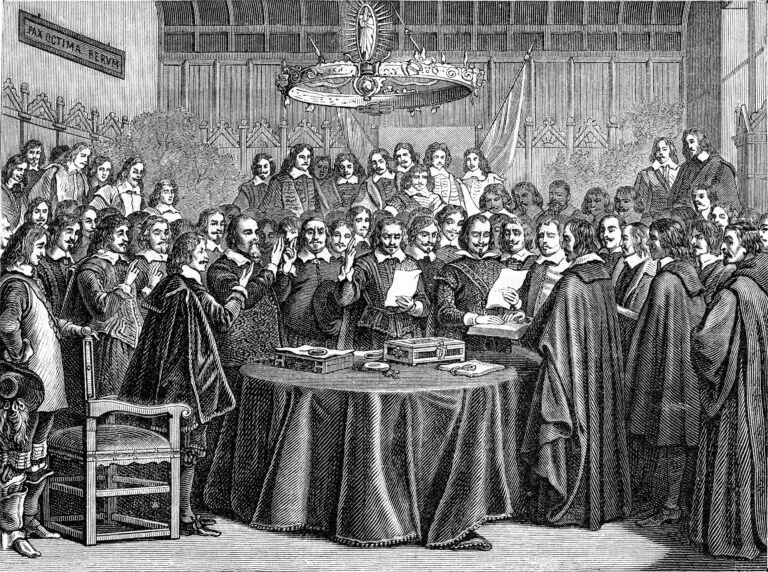Peace of Westphalia

Table of Contents
Peace of Westphalia Overview
The Peace of Westphalia, signed in 1648, marked the end of the Thirty Years’ War, a devastating conflict that had ravaged Central Europe. The peace treaties, negotiated in the cities of Münster and Osnabrück, established a new framework for European diplomacy and international relations.
The Peace of Westphalia is considered a landmark event because it introduced several key principles that have since become fundamental to modern international law and diplomacy. These principles included the recognition of the sovereignty of nation-states, the principle of non-interference in the domestic affairs of other states, and the concept of religious tolerance.
Peace of Westphalia History
The Peace of Westphalia refers to two separate treaties, the Treaty of Münster and the Treaty of Osnabrück, both signed in 1648, collectively ending the Thirty Years’ War (1618-1648) and the Eighty Years’ War (1568-1648).
The Peace of Westphalia is considered a pivotal event in European history as it established the principle of state sovereignty and laid the foundations for modern international relations.
The treaties were negotiated in the Westphalian cities of Münster and Osnabrück, involving representatives from various European powers, including France, Spain, Sweden, and the Holy Roman Empire.
The Peace of Westphalia recognized the independence and sovereignty of the Dutch Republic (the United Provinces of the Netherlands) and the Swiss Confederation, formally ending their wars of independence against Spain and the Holy Roman Empire, respectively.
The treaties also reaffirmed the Peace of Augsburg (1555), which granted rulers of German states the right to choose between Catholicism and Lutheranism as the official religion of their territories.
The Peace of Westphalia introduced the concept of cuius regio, eius religio (“whose realm, his religion”), allowing rulers to determine the religion of their subjects, which effectively ended the religious wars in Europe.
The treaties recognized the territorial changes that had occurred during the Thirty Years’ War, with France gaining significant territory at the expense of the Holy Roman Empire and Spain.
The Peace of Westphalia marked the beginning of the decline of the Holy Roman Empire as a political entity and the rise of nation-states based on the principles of territorial sovereignty.
The treaties also included provisions for the protection of religious minorities and the rights of diplomats, laying the groundwork for the development of international law and diplomacy.
The Peace of Westphalia established a system of diplomatic negotiations and balance of power in Europe, setting a precedent for resolving conflicts through diplomatic means rather than through military conquest.
Related Links
Berlin Wall
Napoleonic Wars
Treaty of Versailles
Unification of Germany